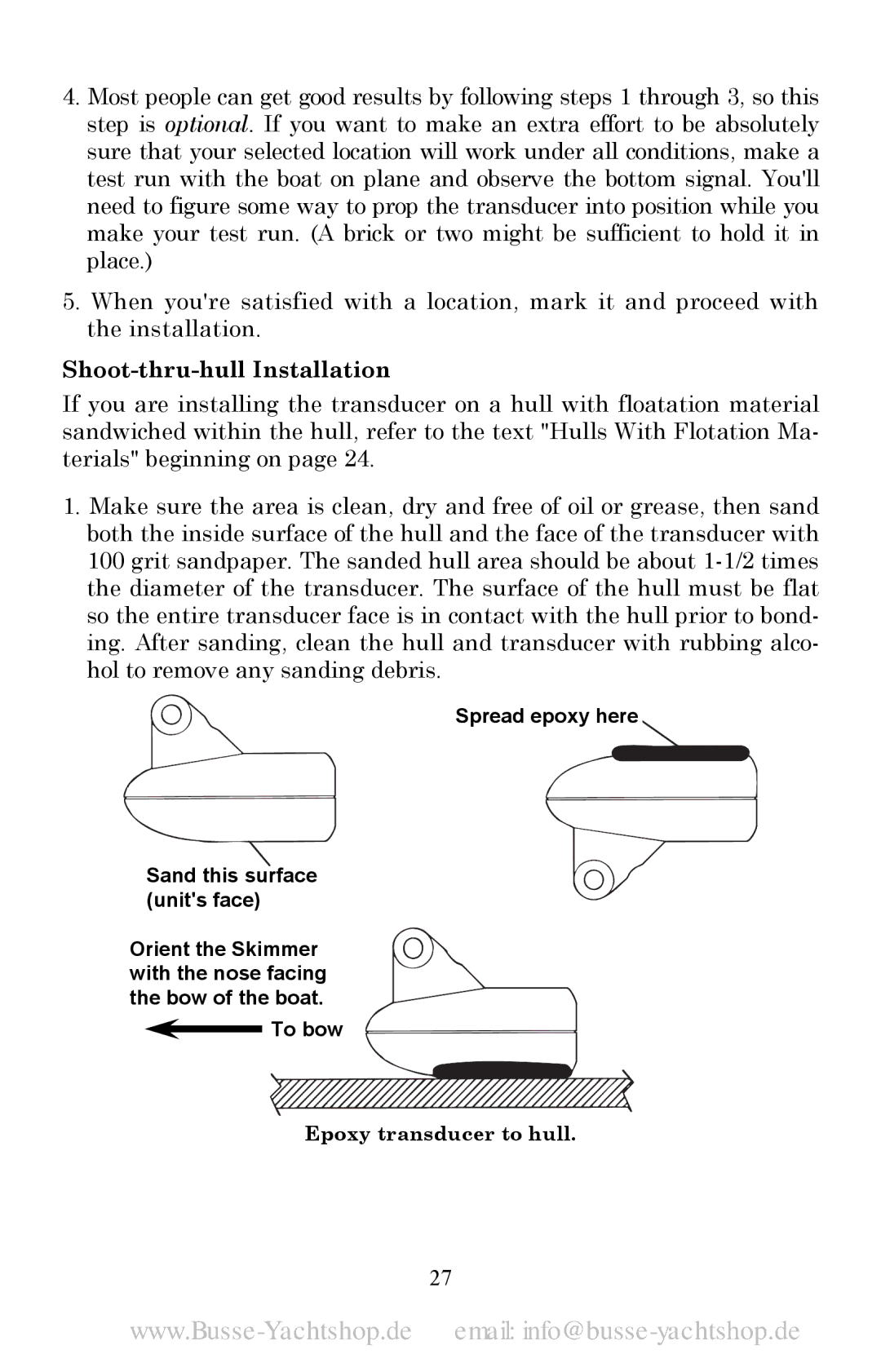
4.Most people can get good results by following steps 1 through 3, so this step is optional. If you want to make an extra effort to be absolutely sure that your selected location will work under all conditions, make a test run with the boat on plane and observe the bottom signal. You'll need to figure some way to prop the transducer into position while you make your test run. (A brick or two might be sufficient to hold it in place.)
5.When you're satisfied with a location, mark it and proceed with the installation.
Shoot-thru-hull Installation
If you are installing the transducer on a hull with floatation material sandwiched within the hull, refer to the text "Hulls With Flotation Ma- terials" beginning on page 24.
1.Make sure the area is clean, dry and free of oil or grease, then sand both the inside surface of the hull and the face of the transducer with 100 grit sandpaper. The sanded hull area should be about
Spread epoxy here![]()
Sand this surface (unit's face)
Orient the Skimmer with the nose facing the bow of the boat.
![]() To bow
To bow
Epoxy transducer to hull.
27
